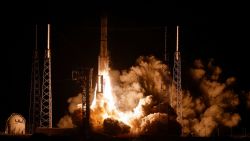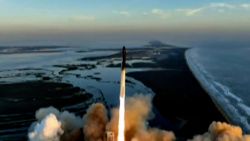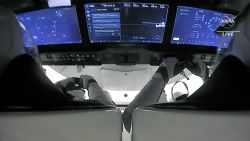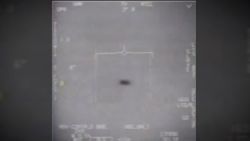SpaceX just launched another test flight of an early Mars rocket prototype at its South Texas facility, sending the towering silver vehicle soaring up to about six miles above Earth, then putting it through a series of aerial acrobatics before re-lighting two of its engines and landing it upright back on a landing pad.

The vehicle, called SN15, was thefifth of SpaceX’s rocket prototypes to attempt such a landing and the first to do so successfully. SpaceX CEO Elon Musk confirmed the successful landing on Twitter:
It comes after four previous prototypes attempted to safely land after soaring a few miles into the air, with all of the prior missions ending in explosions.
SN15 is an early iteration of Starship, the vehicle that Musk envisions will one day carry the first humans to Mars.
The vehicle has several improvements over its predecessors, according to SpaceX. They include upgrades to its hardware, communication and navigation systems, software and it’s massive engines, which are called Raptor engines.
Musk first explained Starship’s intended landing method during a September 2019 media event. He billed it as a unique maneuver that would see the rocket dive back through the air with its belly pointed toward the Earth as its four fins shift slightly to keep it steady. It’s a maneuver that Musk said is intended to mimic how a skydiver would fall through the air, rather than the straight vertical descent to Earth that SpaceX’s Falcon 9 rockets employ when they come in for landings.
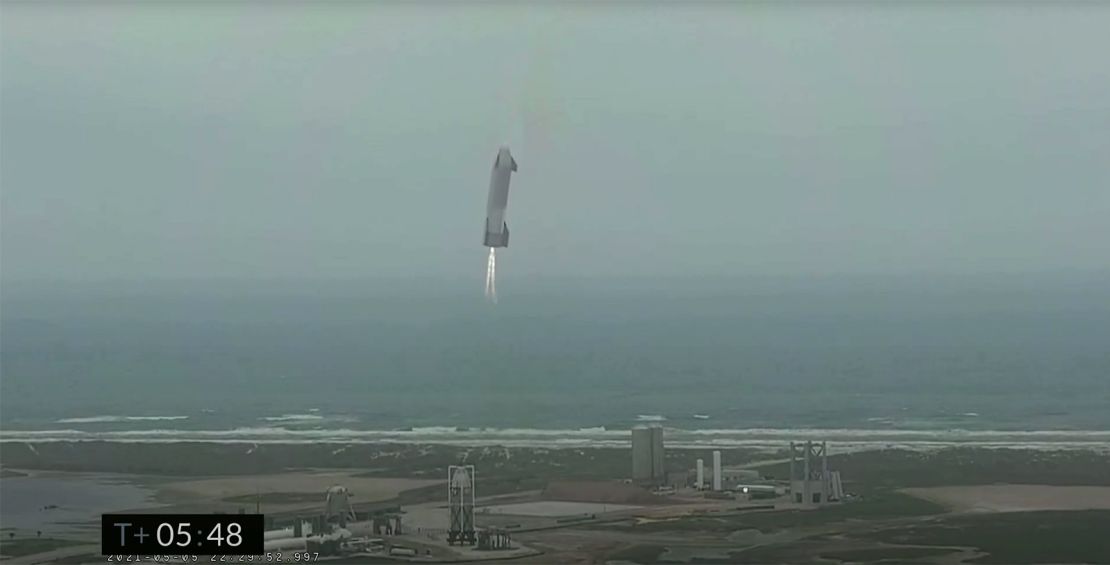
Perfecting the belly-flop landing maneuver is essential to “enable a fully reusable transportation system designed to carry both crew and cargo on long-duration, interplanetary flights and help humanity return to the Moon, and travel to Mars and beyond,” according to the company’s website.
The last prototype to fly, SN11, exploded during landing, rained shrapnel on a nearby beach and threatened nearby video equipment that was set up by YouTubers trying to capture footage of the launch. The prototype before that, SN10, landed upright in March but independent footage of the event showed the vehicle exploded about three minutes later.
All of SpaceX’s Starship prototypes thus far have been far less powerful than the final product envisioned by Musk. While most of the test vehicles have had three engines, the final spaceship is expected to have more than 30, including a separate, massive rocket booster, dubbed Super Heavy, used for getting to orbit.
SpaceX has yet to publicly test the Super Heavy rocket booster, though Musk has said he hopes a Starship vehicle will reach orbit within a year.
SpaceX is also planning to lend out a slightly modified version of the vehicle to NASA for its moon program, Artemis. Under a recently awarded contract, Starship will be used to ferry astronauts from a space station orbiting the moon down to the lunar surface within the next few years, marking the first time humans have returned to the moon since NASA’s mid-20th Century Apollo program.
Update: An earlier version of this story stated that the final spaceship will have more than 40 engines. It is not yet clear what that number will end up being, but the latest information from SpaceX suggets that it will be more than 30.






